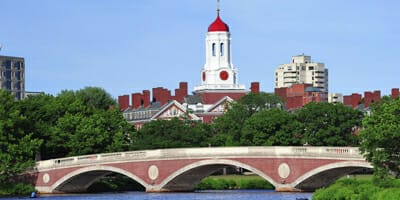Last month Harvard Management Company was the first US university endowment to sign the PRI. It has also appointed its first vice president of sustainable investing as it seeks to incorporate ESG considerations in its decision making. So how is HMC integrating ESG in its portfolio?
Harvard University has taken a stand for sustainability.
Many of the university’s faculty lead the world’s research in environmental science, technology and renewable energy, and developing law and policy around sustainability and climate change.
President of the University Drew Faust gave a speech last month on confronting climate change, and challenged the University alumni and friends to contribute towards a $20 million Climate Change Solutions Fund that will seed new approaches to confronting the threats posed by climate change.
She says there are three ways the University is focusing its efforts on the obligation to the planet and “our collective future”: its research and academic work; an institutional pathway to a more sustainable future and to this end the University has a target of reducing greenhouse gas emissions by 30 percent by the year 2016; and thirdly Harvard has to play a role as a long-term investor.
The $32 billion endowment has returned 12 per cent over the past 20 years, and in fiscal year 2013 it contributed about a third of the University’s operating budget.
Historically HMC has been an innovative investor. It was an early investor in private equity and venture capital (as far back as the 1970s), timberland and natural resources (1990s) and has focused strategies on absolute return.
Endowments are not usually synonymous with sustainable investing, but Jane Mendillo, the endowment’s president and chief executive for the past five years, clearly says that as a long-term investor, HMC is always focused on sustainability.
In a statement upon becoming a signatory to the United Nations-supported Principles for Responsible Investing, Mendillo said: “As long-term investors, we are by nature focused on material ESG factors and the responsible stewardship of our investments.”
There have been some negative responses by Harvard faculty to the endowment signing the PRI, with some more interested in in divestment of fossil fuels than the broad structure provided by the principles.
But Jameela Pendicini, appointed HMC’s first ever vice president of sustainable investing, views ESG considerations as enhancing the investment decision making process, not a vehicle for divestment or any other radical change or limitation in investments. It is an addition to the decision making around opportunities and risks, she says.
Pendicini, who formerly worked in the corporate governance team at CalPERS and before that at PRI, has been working to understand how the investment team already considers ESG factors, for example it already asks questions around health and safety and employment practices.
In her September 2013 endowment report Mendillo said Pendicini’s remit is to work with HMC’s investment professionals and University officials to ensure that ‘we are actively considering ESG issues while maintaining our singular focus on maximizing returns for the University”.
In an interview in the Harvard Gazette, Pendicini says HMC defines sustainable investing as “the integration of material environmental and social and governance factors into investment practices.”
“It’s about doing good business,” she says. “Which is directly aligned with our mission to provide strong long-term investment results to the University.”
In addition to meeting with HMC investment staff, Pendicini has spent the first eight months on the job meeting with university faculty and students to understand what they think about sustainable investing.
“What is really important to understand is that we’re taking a considered approach to integrating ESG factors across asset classes so that we can enhance our ability to evaluate how these issues may impact the valuation of our investments and performance,” she says in the interview. “….. It’s about both managing the short-term ESG risks as well as having a thorough understanding as to how ESG issues may impact our performance over the medium and long term.”
The next steps, using the PRI as a guiding framework, will be to incorporate ESG factors into the HMC ownership policies and practices, seeking further disclosure from companies, and integrating ESG factors into investment analysis.
All PRI signatories are now also required to publicly report on how they are implementing the six principles in their investment practices.
In addition to signing the PRI, HMC has also signed the Carbon Disclosure Project that works with governments, public companies and investors to drive environmental disclosure and performance of publicly listed companies.
The Harvard endowment’s policy portfolio
2008 2013
Domestic equity 12% 11%
Foreign equtity 12 11
Emerging markets 10 11
Private equity 11 16
Total equities 45 49
Absolute return 18 15
Public commodities 8 2
Natural resources 9 13
Real estate 9 10
Total real assets 26 25
Domestic bonds 5 4
Foreign bonds 3 2
Inflation-indexed bonds 7 3
Total fixed income 15 9
High yield 1 2
Cash -5 0
conexust1f.flywheelstaging.com will be hosting its fourth Fiduciary Investors Symposium at Loeb House, Harvard University from October 26-28. For more information go to www.fiduciaryinvestors.com


